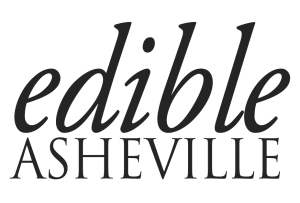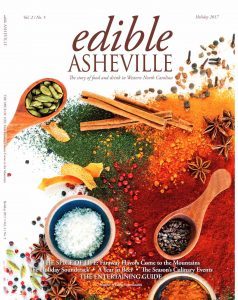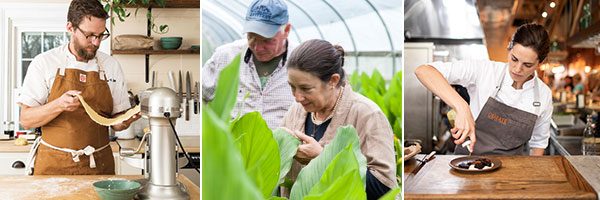A FORCE OF NATURE
A Q&A with RiverLink Executive Director Lisa Raleigh
By Brook Bolen
***
But in the wake of Hurricane Helene—which caused the rivers to swell to historic highs, resulting in the tragic loss of life and billions of dollars in damage—our relationship with the rivers has undoubtedly changed. We know they are beautiful and fun, but we have also become acutely aware of their power and strength.
As the region moves forward in a post-Helene reality, Lisa Raleigh has become a leading voice for the rivers, including the mighty French Broad that moves through Asheville. As executive director of RiverLink, an Asheville-based nonprofit that acts as a steward of the French Broad Watershed, Raleigh advocates for the health of the region’s rivers and, in doing so, advocates for the well-being of everyone who enjoys them.
Raleigh joined RiverLink in 2021, moving to Western North Carolina from Colorado, where she worked for 30 years in both academics and nonprofit organizations. She holds a PhD in Environmental Science from the University of Oklahoma.
Edible Asheville: In the months that followed Hurricane Helene in September 2024, we saw images of our rivers bulldozing their way through homes and businesses, resulting in catastrophic damage. The rivers, of course, were just doing what they’re meant to do—but do you think our relationship with them has changed?
Lisa Raleigh: I imagine there are many different responses to this question depending on how you experienced the extreme impacts of Hurricane Helene and the human toll on life, property and the economy. From RiverLink’s perspective, with great sensitivity and reverence for all that has been lost, we remain champions and advocates of our rivers and streams and we view them as extraordinary community assets and we seek to deepen our commitment to protecting and sharing the beautiful landscape they have created and defined through the ages.
EA: How much do our rivers contribute to the revenue of the region, even just through things like rafting, paddling and fishing?
The French Broad River Partnership completed a two-year study of the economic value that the French Broad River watershed brings to our region and the findings were staggering. Each year, over $3.8 billion of our economy can be attributed to the rivers of our eight-county watershed. Without a doubt, they are an economic, recreational and environmental backbone and asset to our region.
EA: As we start to focus on rebuilding, how can we have resilient development near the river?
This is a really complicated question. The river corridors in our mountainous region provide some of the only flat land for development, and from a historical perspective they drove the location of the railroad and the subsequent supporting infrastructure that has continued over the past 100+ years. Today, we find ourselves—like many cities and communities throughout the U.S.— heavily developed in our floodplains and prone to nui – sance, medium, moderate and extreme flooding.
The only way to be truly resilient is to not have our development in harm’s way; however, that isn’t realistic or practical. But we must try to make more room for our rivers by incorporating more natural open space in the floodplains: reducing our flooding risk and economic damage. In addition, we need to advocate for healthy riparian zones (nature’s natural tree / shrub / plant buffer system) to protect the riverbanks from erosion and damage, which also helps protect our human investments.
EA: In the years since you joined RiverLink, it seems like a lot has happened. Apart from the hurricane, you were able to oversee the opening of the much-anticipated Karen Cragnolin Park in 2023, a project that had been in the works for several years and required a major cleanup of riverfront space next to Carrier Park. What have been the biggest highlights and challenges of the last four years?
It has been a wild ride since I arrived in 2021. Covid was finally winding down and RiverLink’s programming had returned to normal thanks to our dedicated team. We embarked on the much-awaited activation and connection of the greenway phase of Karen Cragnolin Park in our founder’s honor. Being new to the community, I was humbled by the generosity of donors and funding partners. The park’s official opening and dedication remains a highlight for me.
In terms of greatest obstacles, Hurricane Helene’s damage to our rivers and to the communities that live alongside them has been beyond imagination. It will take a lifetime of work to help stabilize, repair and restore the hundreds of miles of river banks that were decimated by this flood. We are committed to ensuring our rivers have a seat at key decision-making tables as we recover—including learning how to better adapt to living in floodplains and making more room for the rivers whenever possible.
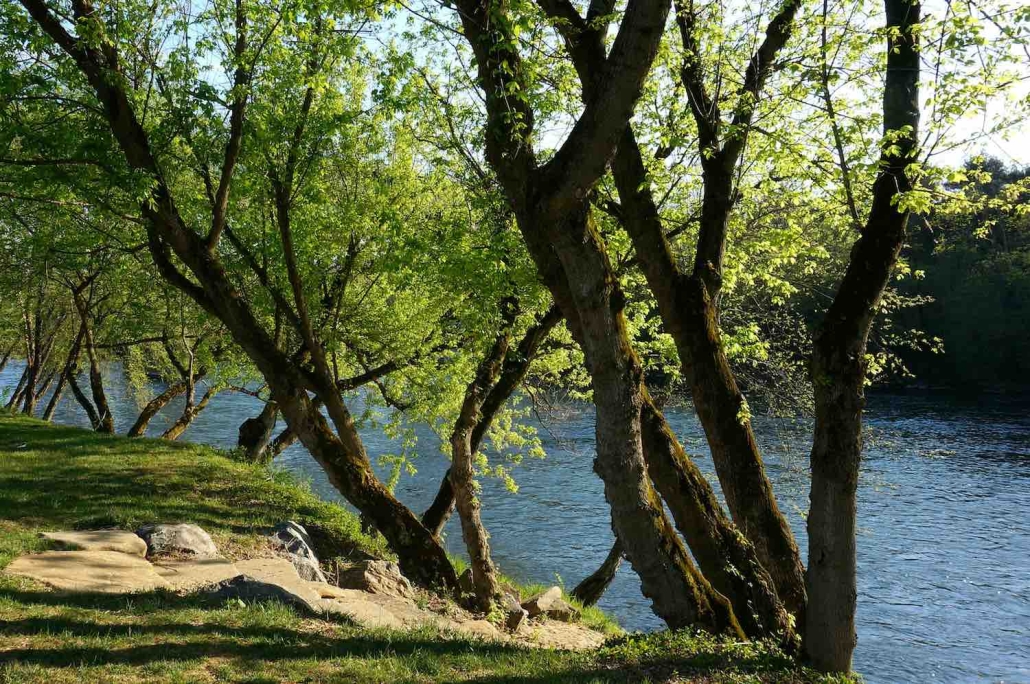
Banks of the French Broad River
EA: The French Broad and Nantahala are two local rivers that attract a lot of outdoor adventure seekers. How about you? What role has the outdoors played for you in your life, and what are your favorite things to do outdoors?
My entire life has been defined by the outdoors. From growing up showing hunter/jumper horses in Montana for the first 18 years of my life, followed by a 30-year chapter in Redstone, Colorado, after grad school, I have been a passionate outdoor enthusiast. I’ve also had the great personal adventure of being married to a high-end rock climber for the past three-plus decades that has taken us climbing around the world.
EA: Transitioning to the subject of food, what sorts of meals did you eat growing up? And how did the food scene in the cities in which you’ve lived compare to the food scene in Asheville, which champions farm-to-table fare?
I grew up in Western Montana on an equestrian property so meals typically felt more functional than gourmet; however, my parents were very social and we often ate at nice restaurants. During my 30 adult years in the Colorado mountains, in the shadow of Aspen, the food scene was incredible and very comparable to Asheville. While the growing season was more limited at that elevation, there was the same commitment to local, organically grown food and many innovative boutique restaurants and festival celebrations around food.
EA: What are your favorite meals to enjoy with your family? Do you enjoy cooking?
With our daughters grown and out in the world, my husband, Duane, and I do eat at home most nights during the week and then often head out to restaurants on the weekends with friends. Duane does much of the cooking since he restores antique lighting from home while I am at the office or out in the community on RiverLink’s behalf. I do enjoy cooking on the weekends, if we are around and when I have more time, and make a mean enchilada dish with fresh tortillas from Tamaleria Y Tortilleria Molina in West Asheville.
EA: What are your favorite local restaurants and dishes?
Duane and I live in Black Mountain and we love La Guinguette. From the intimate, cozy atmosphere and lovely staff to the delicious crepes and savory soups, we enjoy going there frequently and year-round.
EA: What’s the best, most memorable dish you’ve eaten recently?
We were recently given a gift certificate to Cúrate and ate there for the first time. Every dish was so unique and delectable, we savored each bite from the multiples of plates we ordered.
EA: What are your favorite food-related guilty pleasures?
On the savory side, salt + vinegar potato chips. On the sweet side, homemade chocolate chip cookie dough with a dash of sea salt.
EA: What’s one recipe everyone should make?
A “Raleigh Tamale.” When friends of ours back in Colorado first opened a gourmet burrito shop they featured this on the menu in our honor. You take a fresh tamale and slice it into discs and heat in a skillet. Then place the tamale pieces on an open flour tortilla, add monterey jack cheese, refried beans, sliced jalapeños and salsa or hot sauce of your choice. Fold the tortilla into one third of its original size. Grill the loaded burrito in a skillet with a dose of butter or olive oil and brown to perfection on all sides. Voila! A Raleigh Tamale.
Save
Save
Save
Save
Save
Save
Save
Save
Save
Save
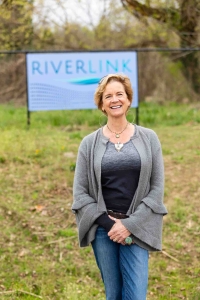
Lisa Raleigh is executive director of the non-profit RiverLink.
THE WEEKLY REVEL
Sign up for your free handpicked guide to enjoying life around Asheville.
Available weekly from May to October.

